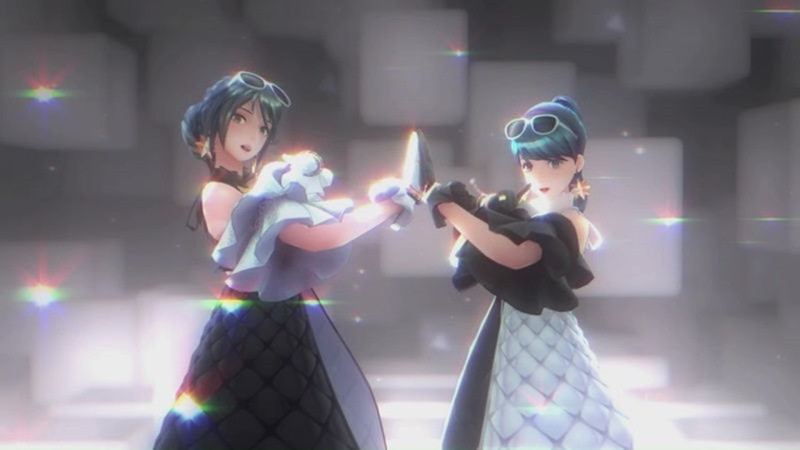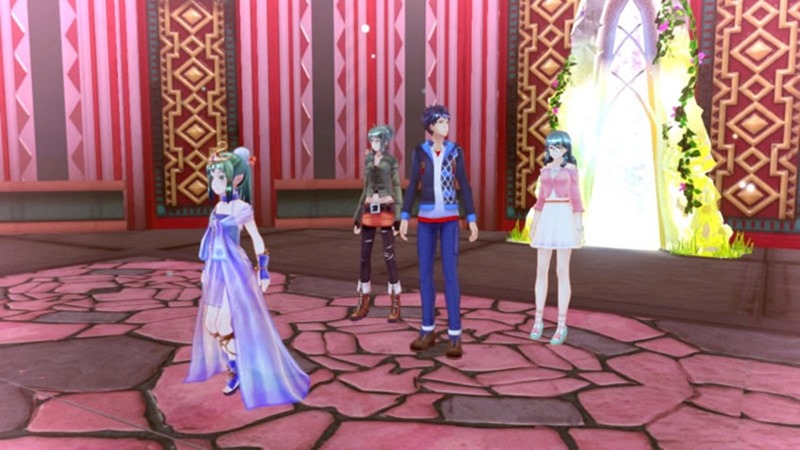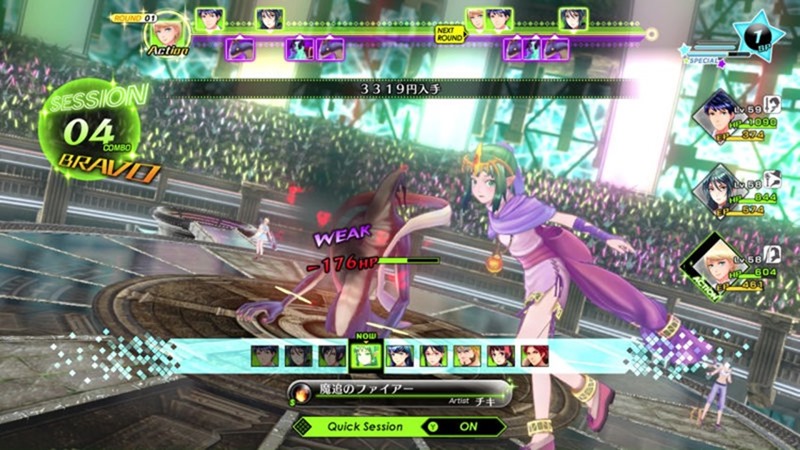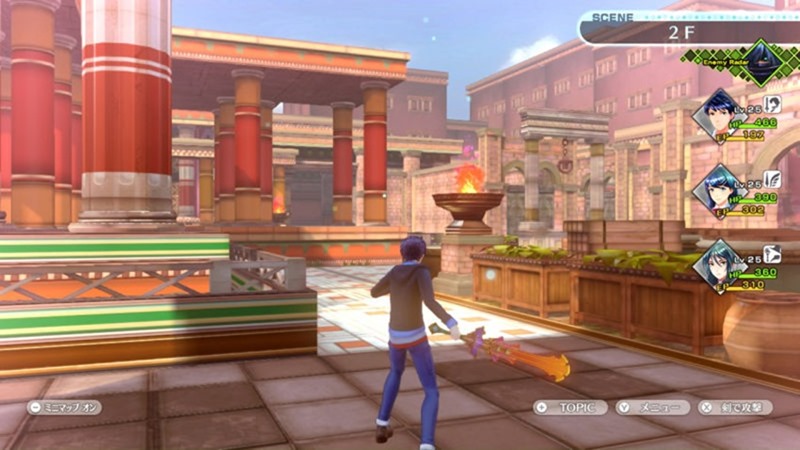What do you get when you do a crossover between a series known for its tales about war and politics and another where you literally fight Lucifer himself? You get a game about Japanese pop idols of course. Tokyo Mirage Sessions #FE Encore is not the game I would’ve imagined a crossover between Fire Emblem and Shin Megami Tensei would be especially thinking back to the initial trailer for what was only known back then as Shin Megami Tensei X Fire Emblem. I never got to play it back when it launched on WiiU, mostly because it was on, well, the WiiU. I’m glad I’ve finally gotten the chance to play it, but it wasn’t really the game I expected it to be.

The story follows the journey to stardom of childhood friends, Itsuki and Tsubasa. At a young age, Tsubasa was the sole survivor of a mysterious mass disappearance during one of her sister’s performances. Having always held on to the hope of finding her sister again she joins the entertainment industry to gather information to help find out her whereabouts and because she’s also quite obsessed with pop idols. Being an idol is not really what you’d imagine it to be however as she soon learns that the disappearance of her sister was caused by otherworldly beings known as Mirages who are out to steal people’s Performa, which is sort of like their life essence. Tsubasa and her friends find they have the power to use Mirages for good and become Mirage Masters. With the power of music and their special Performa they become the only hope of stopping this threat.
The overall narrative is okay. Being a crossover title of two different games you’d expect there to be some amalgamation of their themes and undertones but there really isn’t any outside of a few minor references. Sure, the Mirages that you use are characters from Fire Emblem, but they conveniently have memory loss so they’re a blank enough slate to fit into any story. The game is just kind of its own thing and that’s fine, but the story plays it incredibly safe. It doesn’t take itself too seriously and for a game about pop idols using Fire Emblem characters to fight monsters, it makes sense, but it struggles to keep things interesting as the game progresses.

Tokyo Mirage Sessions leans heavily into Japanese pop and idol culture and as a huge fan of J-pop I instantly connected with its style and themes. It’s got a vibrancy and energy that just feels refreshing. Everything from the music to visuals made this game feel alive and interesting. While Shin Megami Tensei is a series that spans multiple different games, this seems to take more inspiration from the Persona franchise which means it’s less grit and more fluff which I’m perfectly fine with as I adore Persona.
There are also some clever little design choices that was made that help maintain a thematic consistency throughout. Things such as your equipment in the menu screen being called a wardrobe or party members being addressed as artists. It’s a neat touch that fits perfectly in the world but as much praise as I have for this game’s style and art design however, the characters is probably what ended up being my biggest problem with the game.
If you look at the cover of this game or have seen any trailers for it, you know it’s unashamedly anime. There is absolutely nothing wrong with that, but it relies way too much on tired character stereotypes. The protagonist, Itsuki, is probably one of the blandest characters I’ve played as in a JRPG in quite some time, to the point where I feel like even the silent protagonists of Persona have more personality than him. He’s your typical male best friend type that gets dragged into things because he’s always supporting his friends. His character exists solely for the sake of others and it’s quite annoying. Tsubasa, on the other hand, is the resident airhead whose kind of ditzy and oblivious but at least manages to be entertaining at times. Honestly, the story is more focused on her, so I have no idea why she wasn’t the protagonist. There’s a little girl who insists on calling you big brother or “onee-chan”, a flirtatious female manager type, an overly shy girl who blushes at everything; this game just checks all the anime character boxes. They all seem to be defined by their archetypes and never go far beyond that. Some of the side stories definitely add a bit of flavour to the characters but they also feel inconsequential. JRPGs have come a long way, especially in the last couple of years, delivering stories with unique and interesting characters, but Tokyo Mirage Sessions ends up feeling like a relic of the past and because of this, I struggled to maintain interest in the overall narrative.

Where this game truly shines, however, is in its gameplay, specifically the turn-based battle system. While the Fire Emblem and SMT connections are loose here, Tokyo Mirage Sessions borrows some parts of each of the respective battle systems. The weapon types from Fire Emblem makes a return as well as the elemental weaknesses and a majority of the spells and skills from SMT. Unlike other SMT games where exploiting an enemy weakness would trigger a Press Turn which is essentially an extra turn, it instead triggers Sessions. Session skills are combo attacks which trigger off of other skills. For instance, one character can use a sword attack, while another has a Session skill which does a Fire attack when a sword attack is used and then another character’s Session skill triggers off fire attacks. It’s fun creating these chains and the opportunity to extend these combos only grow as the game progresses. There’s still a nice balancing act though as you have figure out when to use Sessions alongside your normal debuffs/buffs etc. it’s an addictive system made even better by the customization.
Each character has an assigned Mirage to them that grows over the course of the game. Where in SMT you can chop and change demons or personas, here you only really have one, but you can create a wide variety of weapons from materials dropped by enemies. Each weapon has a set of skills and passives that you can learn as you level up. Kind of like Final Fantasy 9 where you’re building your character’s kit up from the weapons you wield. Each character only has a few slots for normal and Session skills however so knowing the kind of team you want to build and taking into account character synergy, there’s a lot of to play around with. Characters can also unlock new passives and unique skills as they grow as performers and through side stories. I really had a blast with the gameplay, especially on hard mode and the battle system is easily one of the best turn-based systems I’ve played in recent memory. Not all aspects of the gameplay are perfect though, especially the dungeons. Each one has its own gimmick that acts as a puzzle, but it also means there’s a lot of backtracking and a lot of the times I got lost. It’s not the worst dungeon design I’ve seen but it left me feeling frustrated on more than occasion.

Tokyo Mirage Sessions is really colourful and has a pleasant art style. The visuals alongside the catchy and fun music really add to the game’s upbeat mood. Even though a modern-day Japan setting isn’t something new these days with games like Persona, The World Ends with You and Digimon Cyber Sleuth all sporting their own take on it, this game has its own unique aesthetic that sets it apart. It also looks nice in handheld mode and runs smoothly though it is a bit blurry and the jagged edges are much more noticeable in docked mode. There also isn’t an option for English voices but I usually like playing JRPGs with a Japanese dub so it wasn’t a problem and it helps that the voice work is quite good too. Overall, I think there was a clear and consistent vision of how they wanted the game to look and sound and they executed it perfectly.
Tokyo Mirage Sessions is a game I wanted to play for a very long time, but I walked away from it with conflicting feelings. On one hand, the battle system was incredibly addictive and fun, and I honestly couldn’t get enough of it. On the other, the story fell flat and it was plagued by a forgettable and borderline boring cast of characters. In the end though, if you’re looking for a fun JRPG with a story that doesn’t take itself too seriously then you could do much worse.
Last Updated: January 21, 2020
| Tokyo Mirage Sessions #FE Encore | |
|
With one of the most addictive turn-based battle systems you’ll find today in a JRPG, Tokyo Mirage Sessions was a blast to play. It’s just unfortunate that the story and characters were about as bland as flavourless rice cakes.
|
|
|---|---|
| Tokyo Mirage Sessions #FE Encore was reviewed on Nintendo Switch | |
|
81 /
100
| |





















Zain Moosa
January 23, 2020 at 21:27
An awesome review Umar. I have to agree with the battle system. By far my favorite of recent turn based styles. I also didn’t enjoy the dungeons too much, especially the back tracking.